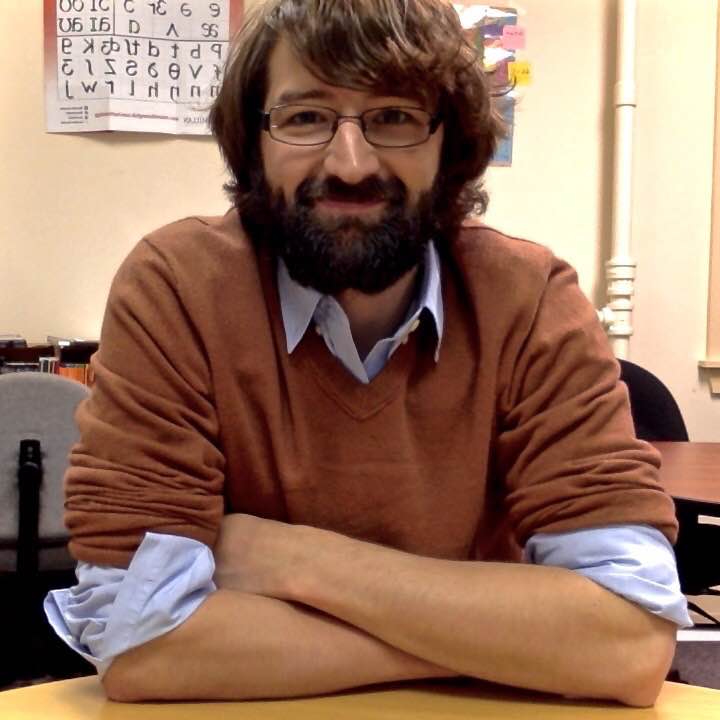Social Media for Teachers: Twitter for Professional Growth
by Nathan Hall
 Twitter is a strange creature: vilified by some, lauded by others. My journey in Twitter began with a mix of curiosity and trepidation. I was required to join as part of my master’s program, but my account sat dormant for many months. Thinking I had nothing to share, I chose to simply follow others from whom I felt I could learn.
Twitter is a strange creature: vilified by some, lauded by others. My journey in Twitter began with a mix of curiosity and trepidation. I was required to join as part of my master’s program, but my account sat dormant for many months. Thinking I had nothing to share, I chose to simply follow others from whom I felt I could learn.
Fifteen months later, I still hadn’t tweeted, and I felt it was time for me to either close my account or bring it to life. That was January 2012, and my New Year’s resolution was to start a blog and to use Twitter to share my posts in hopes of connecting with others. Not knowing what to post on my blog, I took inspiration from a technology blog I regularly read, Daring Fireball. This site uses short commentaries along with links to news articles and websites that discuss Apple products. The posts are short and simple, while still adding a bit of personality and reflection. I started up a website, found a news article I thought was interesting, and posted a commentary along with a quote and a link to the original article. With that completed, out went my first tweet.
Not surprisingly, I didn’t even get a single reply, but it managed to give me confidence to tweet more. The proverbial ice was broken, and I felt free to share more openly. Slowly, I made more connections as I learned how to use hashtags, followed people who were tweeting on subjects I cared about, and participated in Twitter chats. My blogging began to evolve as I started creating my own content instead of just commenting on what others had written. Over time, I met some of my fellow tweeters at conferences and workshops, creating instant friendships with many of them. Eventually, tweeting became more natural and less contrived. Most of all, I grew as a teaching professional. The act of reflection forced me to consider, and often reconsider, what I knew or believed to be true about language teaching, and by sharing that with others, the act became reciprocal.
For those of you who are where I was back in January 2012, deciding whether to join Twitter or not, allow me to share some of my ideas about how you can use Twitter to grow your personal learning network (PLN).
1. Be yourself: One of the things I learned from others is to allow people to see the real you. Dean Shareski, an educator and trainer from Regina, Saskatchewan, Canada created a video “warning” others that he would be tweeting about life, work, and everything in between. Just as in an office, school, or any other workplace, we don’t just talk shop; we share about what is happening in our lives. Education does not define me, even if it is something I deeply care about.
You might not be comfortable sharing personal information online, which is understandable, but you don’t need to share too much. Be willing to open little windows into other areas of your life so people can connect with you on a personal level. We all hate the major disconnect we feel when we communicate with a large business. It might be their automated phone system, or form emails we receive in reply. We feel connected through personal means of communication. That’s how I feel about Twitter. The joy is in the connections, not just the content.
2. Don’t be afraid to copy: I’m not advocating plagiarism here, I’m simply suggesting that if you don’t know how to tweet or blog, find someone who does and then emulate their techniques or style until you create your own. That is what I did with my blogging, eventually creating my own writing style. It is also what I did with my tweets. I found people who were more experienced on Twitter and I watched how they interacted with others and worked within the confines of this medium.
3. Join in: For me, the most rewarding aspect of Twitter is making connections with people from around the world. I experience this the most during conference live-tweets and twitter chats. When I first started live-tweeting at conferences, I was amazed at how well this tool allows people from around the world to join in with those who are physically attending the conference. It enhances my own experience at the conference by forcing me to condense what I am learning into manageable, bite-sized pieces. On top of that, it gives me the opportunity to take part in other sessions I am unable to attend.
I also love participating in Twitter chats. These are scheduled times when people tweet using a single hashtag, such as #LINCchat. People share ideas, links, problems, and questions on a single topic. These live, online discussions are also a time to find like-minded people to follow. You can go back over the tweets by searching the hashtag, even if you were unable to attend during the live chat.
Twitter is not magic, nor will it make you into a better teacher. What it will do is give you a voice and connections to those whom you would normally never have the opportunity to meet. It is a venue in which the conversation can happen. What you do in that space is entirely up to you.
*This article first appeared in TESOL Affiliate News, March 2016.
Nathan Hall is an instructional resource coordinator for LISTN, an instructor for Douglas College, and a community coordinator for Tutela. He is an active member of the BC TEAL board, and he was selected to present a “Best of Affiliates” session at the TESOL 2015 International Convention. You can follow Nathan on Twitter @nathanghall.
TESOL Blogs
Interested in writing a blog for TESOL?
Read the submission guidelines and send us your post!
Check out the latest TESOL Blogs:
|
4 Highlights From a Great Adult Ed Resource, by Robert Sheppard
 It can sometimes be tricky to find research, literature, and professional development materials that are focused specifically on adult immigrants. One invaluable resource, as many of you may know, is the LINCS website. As the About page explains, LINCS (a somewhat forced acronym for Literacy Information and Communication System) was designed “to organize and promote resources within the field of adult education and serve as a central repository for information.” As such, it is a fantastic resource for adult ed teachers and administrators. One of the most useful parts of the site is their Publications page. To give you a bit of the flavor of what they publish, I’m going to give a quick description of a few of their most recent documents. Read More. It can sometimes be tricky to find research, literature, and professional development materials that are focused specifically on adult immigrants. One invaluable resource, as many of you may know, is the LINCS website. As the About page explains, LINCS (a somewhat forced acronym for Literacy Information and Communication System) was designed “to organize and promote resources within the field of adult education and serve as a central repository for information.” As such, it is a fantastic resource for adult ed teachers and administrators. One of the most useful parts of the site is their Publications page. To give you a bit of the flavor of what they publish, I’m going to give a quick description of a few of their most recent documents. Read More.
|
|
Know Your ELLs’ Rights: A Quick Federal Law Review, by Nathan Hall
 Our training for ESL/ELL specialization covers lots of ground. To make ourselves valuable resources for our students, we learn about linguistics, cultural connections, how to adapt assessments, and curriculum development. What we rarely learn about, though, are the laws behind ESL instruction—and that can be a problem, because a recent Associated Press investigation found that many districts throughout the nation are ignoring federal laws. Sadly, this hurts many students at the secondary level who may start to see dropping out as a more attractive option than dealing with an unwelcoming district, and because their parents may not speak English well enough to advocate for them this may become our responsibility. Our training for ESL/ELL specialization covers lots of ground. To make ourselves valuable resources for our students, we learn about linguistics, cultural connections, how to adapt assessments, and curriculum development. What we rarely learn about, though, are the laws behind ESL instruction—and that can be a problem, because a recent Associated Press investigation found that many districts throughout the nation are ignoring federal laws. Sadly, this hurts many students at the secondary level who may start to see dropping out as a more attractive option than dealing with an unwelcoming district, and because their parents may not speak English well enough to advocate for them this may become our responsibility.
There are some set laws about ELL/ESL programs we need to be familiar with to make a case for educating ELLs. Some of the most significant laws and other things you need to know are: Read More. |
|
Free Online Education Conference: EdmodoCon, by Tara Arntsen
 Looking back, it seems that I first mentioned Edmodo way back in 2013 when talking about LMSs, which is a term that did not even come up in that post, oddly enough. Edmodo has also popped up from time to time in a number of other posts, but today I want to just focus on EdmodoCon, a free 2-day online conference for professional development. Looking back, it seems that I first mentioned Edmodo way back in 2013 when talking about LMSs, which is a term that did not even come up in that post, oddly enough. Edmodo has also popped up from time to time in a number of other posts, but today I want to just focus on EdmodoCon, a free 2-day online conference for professional development.
The event is self-described as “a live online global event where educators from around the world connect with each other to share how they’re using Edmodo and other digital tools to personalize learning. The educational professional development event of the year, EdmodoCon will help you collaborate with other teachers, discover valuable new resources, and inspire you to harness the power of edtech in your classroom.” Read More. |
|
Pronouncing ELs’ Names Correctly, by Judie Haynes
 I once expressed to a Korean parent my dismay that so many of my students from Korea came to school with an Anglicized name. Since I taught in an elementary school, it was usually the parents who picked a new name for their children. The parent told me that students change their names to accommodate English speakers; the perception is that Americans can’t pronounce unusual names. I was dismayed by this because it’s not that we can’t do it, but that the importance of pronouncing names correctly is not recognized. A student of mine, Yeon Jae, tried to correct teachers and classmates when they mispronounced his name, but most of his teachers and all of his classmates called him “Young.” Yeon Jae finally gave up. Read More. I once expressed to a Korean parent my dismay that so many of my students from Korea came to school with an Anglicized name. Since I taught in an elementary school, it was usually the parents who picked a new name for their children. The parent told me that students change their names to accommodate English speakers; the perception is that Americans can’t pronounce unusual names. I was dismayed by this because it’s not that we can’t do it, but that the importance of pronouncing names correctly is not recognized. A student of mine, Yeon Jae, tried to correct teachers and classmates when they mispronounced his name, but most of his teachers and all of his classmates called him “Young.” Yeon Jae finally gave up. Read More.
|